Sewing Room Organization Ideas: Start Your Spring Cleaning
Have you ever walked into your sewing room, or looked at your sewing space, and been completely overwhelmed and uninspired by the mess you see? It happens to me from time to time—I’ve been doing some spring cleaning in my sewing room this week because of the cluttered chaos.
Organizing is always a valuable use of your time. When everything is cleaned up and tidy, it leaves you feeling excited and motivated to start a new project. That’s why I’ve got some sewing room organization ideas to share with you today. Whether you have a dedicated sewing room or not, I’m sure there’s something you can do to get more organized.
Even a little spring cleaning can help you feel more creative. But don’t get overwhelmed and try to do everything in one day. Organizing your sewing room takes time, and you should enjoy the process of rediscovering the fabrics and notions you have hiding in your stash.
Let’s get started! Here are some sewing room organization ideas you can start today.
Clear the Dust and Let Some Fresh Air In
Your windows have probably been shut all winter long. Pop them open and let some fresh air into your sewing space. If you haven’t already caught the spring-cleaning fever, some fresh air will definitely do the trick!
Start with some basic cleaning—wash the windows, dust off the fan and shelves, wipe down your cutting table and sewing machine, and sweep or vacuum the floor. It’s amazing how many little pieces of thread you’ll find. Then, pick one area in your sewing room to start organizing. I like to start with my sewing tools because they’re often scattered around my space.
Use Clear Storage Bins
Sewing is one of those hobbies that can overtake every space in your home, especially if you’re someone who can’t resist buying fabric… That’s why cabinets and shelves are a must in your sewing room. You need a place to store everything—fabric, notions, and all your other supplies. However, I recommend that you sort your items into bins before putting them on your shelves.
Loose items always look messy, but storage bins help you stay organized. It’s great when you can repurpose boxes and other items around your home for sewing storage (I have several Royal Dansk cookie tins. 😊 Do you?), but if you don’t have anything to use, I recommend getting clear, plastic storage containers. When you can see what you have, it’s easier to get inspiration for your sewing projects. You can use clear storage bins for patterns, fabric, unfinished projects, notions, or anything else.
Don’t Overlook the Space on Your Walls
If you’re really hurting for storage, look for other creative places to put things. For example, you could make a sewing tool organizer that sits under your machine or an ironing board organizer. Also consider getting an over-the-door organizer for the back of your door.I hope you can find some good sewing room storage solutions, but don’t forget that your walls offer storage space, too!
One of the most versatile types of wall storage you can use is a pegboard. It’s customizable with movable hooks, bins, and other accessories that can accommodate any tools or notions you have. I love that you can display and organize your sewing tools while keeping them close at hand.
Madam Sew sells a sewing room pegboard kit that comes with four starter panels and several accessories. If your sewing table is always messy and you can never seem to find the tools you need, a pegboard is going to be a gamechanger for your productivity. It helps free up space on your sewing table and keep your space clean and tidy. (Don’t worry—it’s easy to install!)
If you’re really hurting for storage, look for other creative places to put things. For example, you could make a sewing tool organizer that sits under your machine or an ironing board organizer. Also consider getting an over-the-door organizer for the back of your door.
Organize and Destash Your Fabric and Notions
I admire people who can purchase the exact amount of fabric they need for a sewing project and no more… However, I’m guessing those people are more of an exception than the rule. Most of us have way more fabric than we like to admit, and our scrap bins are overflowing.
When you’re in spring cleaning mode, spend some time going through all the fabric you have and destashing, if you’re able. As you go through items, create three piles — things to keep, things to give away, and things to sell.
Getting rid of fabric is hard, but if you have some yardage that you know you will never use, it makes sense to donate it or sell it. This frees up space so you can better organize the things you want to keep. It’s also a good idea to store fabric you don’t plan to use for a while in a protective container. Madam Sew has some large-capacity bags that are perfect for this.
Your scrap bin should get the most attention when organizing your sewing room! Go through your scraps and eliminate the really small pieces and anything you don’t think you’ll ever use. I also like to make a mental note of things I can do with my scraps. If you want some ideas, read our post on 10 Projects to Sew with Scraps.
Get Control of Your Thread and Bobbins
Fabric can be hard to manage because it takes up a lot of space, but thread and bobbins can be a real pain, too. They can easily unwind and become a tangled mess. If you haven’t discovered spool and bobbin clamps yet, you’re going to fall in love. They keep your thread from unwinding and help you get organized.
An created a video to show you how well these spool huggers, bobbin holders, and bobbin clamps work together. I wish I would have started using them years ago!
Some people like to organize and display their thread on a thread rack. This could be a good solution for you, but you can store them in plastic containers, too.
Clear Off Your Cutting Table
If you have a small sewing space, it can be tempting to leave stacks of fabric or tools out on your cutting table. This hurts your productivity because you must move everything before cutting out a project. You might even lose motivation to start. If possible, clear everything off your table and find a home for it elsewhere. Also consider getting something like the Upstanding Tool Caddy to organize small tools that seem to get left everywhere, like seam rippers, thread snips, and marking pens.
Once your cutting table is cleared off, spend some time deep cleaning it. If you have a self-healing mat, you can use a pencil eraser to remove any lint that has become embedded into the cutting grooves. A lint roller can also help you remove any loose threads.
Restock Your Stash and Perform Basic Sewing Machine and Tool Maintenance
Nothing is worse than breaking a needle only to realize you don’t have a spare. That’s why I like to assess my stash when organizing my sewing room and stock up on the items I use the most. You should buy replacement sewing machine needles, rotary blades, and any notions you use all the time.
Most sewing machine manufacturers recommend that you get your sewing machine serviced every 1-2 years. You should be doing your own regular maintenance, but a repair technician can fix timing issues, give your machine a deep cleaning, and ensure that everything is working properly. If you haven’t gotten your sewing machine serviced in a while, make an appointment.
Your iron, scissors, and other sewing tools might also need some attention. Clean your iron so it doesn’t leave flaky residue on your fabric, and sharpen your scissors so they give you clean cuts. Don’t let these overlooked maintenance tasks hinder your creativity.
After you’ve finished your spring cleaning, make a goal not to start any new projects until you’ve finished the ones you’ve started... 🤣 I really do mean this, but I know it’s a lot harder than it sounds!
Do you have any other sewing room organization ideas you’d like to share? Leave them in the comments below. We can all help each other out.
Cara Stromness,
Blogging for Madam Sew and Sewing Society
Cara is a new contributor to the Madam Sew Blog. She loves sewing, quilting, and machine embroidery. Be sure to subscribe to see her future posts about sewing tips and fun, step-by-step projects.








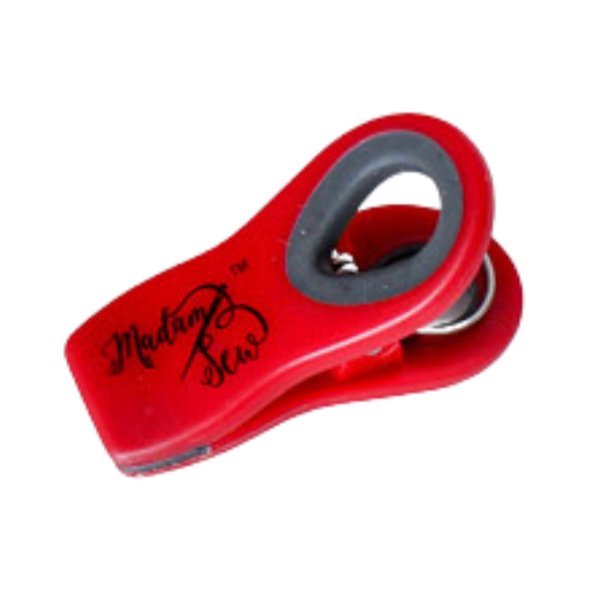
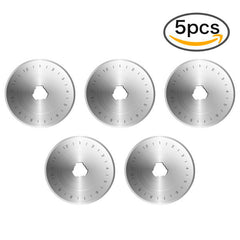
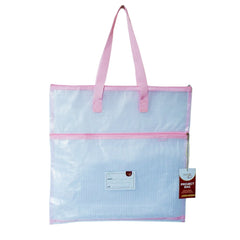
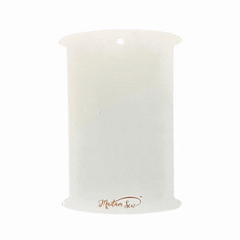
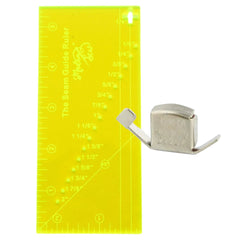
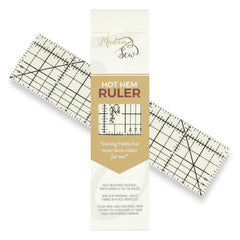
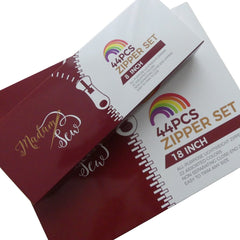
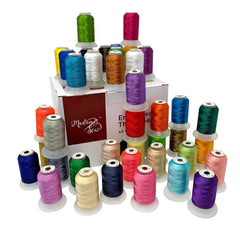

7 comments
I love to make art quilts. They really challenge my ingenuity. A long, slow process. But so worth it. To make eyes and highlights and beaks and noses, etc, you need lots of itsy bitsy pieces. I never throw them away. Clear plastic bins help immensely. I can always find the color I want! Your not an art quilter if you can’t hold up a piece of fabric and find it full of holes.
I like to sew 18” doll clothes (and matching girls dresses). When I buy a new pattern, I cut out all the pieces, put them back in the envelope and then in a quart size ziplock bag. When I cut out an outfit I fold it to fit in the bag with the pattern so it all together and ready to sew. I usually cut out several outfit at a time so when I am ready to sew I don’t have to stop and cut each time. Sometimes I even put the matching thread in the bag so I don’t have to look for it. Also I try and cut a couple of outfits that will use the same color thread so I can sew two outfits at the same time. I also sew from one piece to the next so don’t use a lot of thread.
Enjoyed reading the good suggestions. I’m in the process of setting up my own sewing room so these tips will come in handy,
Love all the “hints” from Madem Sew users. So nice to have “helpers” in the workspace. I have been sewing a loooong time, as many of you have, but I can always learn something new from others….. one of the joys of sewing…..
What I would really like to do is send you a photo! My cutting area is a separate counter top at the perfect height for me. There’s not a lot of room, cause it’s in my kitchen. Anyway, I made a wallhanging for over my cutting area. There are two deep clear pockets at the bottom. They hold my two favorite rulers the second row has two pockets with a rotary cutter and sewing scissors. I use clear vinyl for the pockets and edge the top of the vinyl with matching bias tape. The top row has 4 pockets, for square rulers, small rulers, another holds pens, pencils, and fabric markers. The last pocket holds my cell phone, a tape measure, and see-through marking tape.